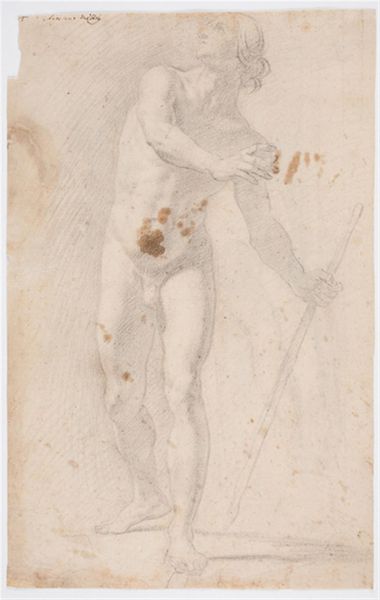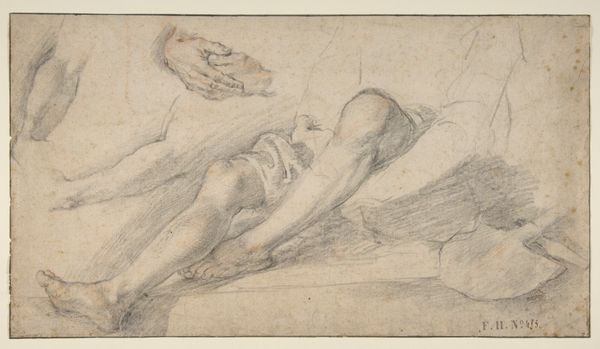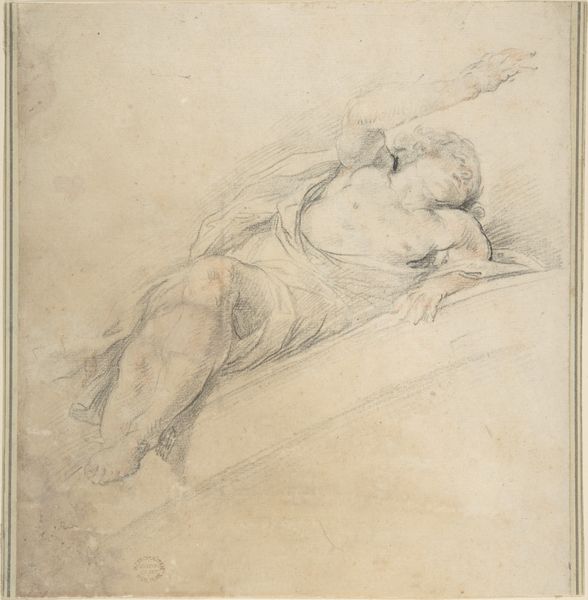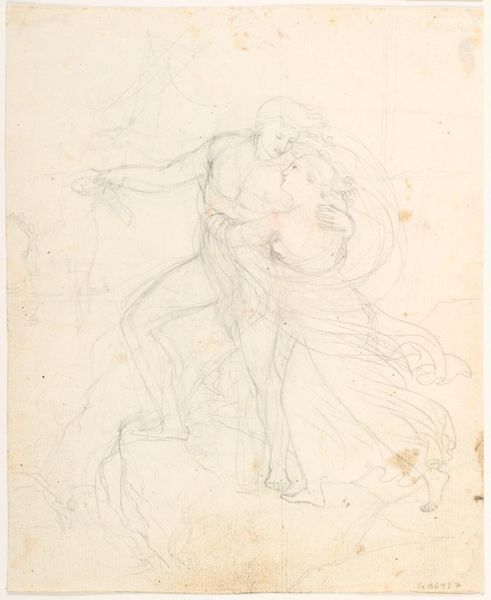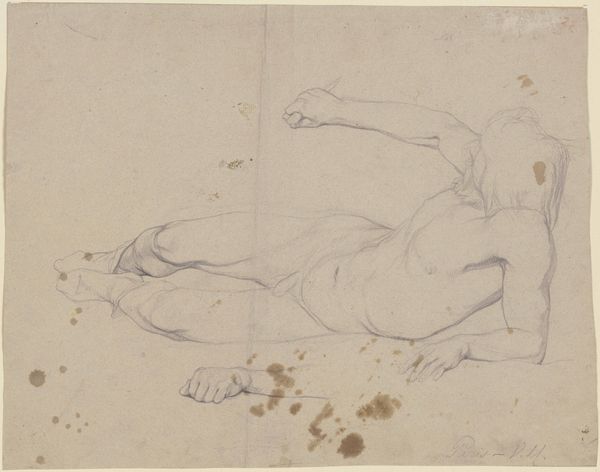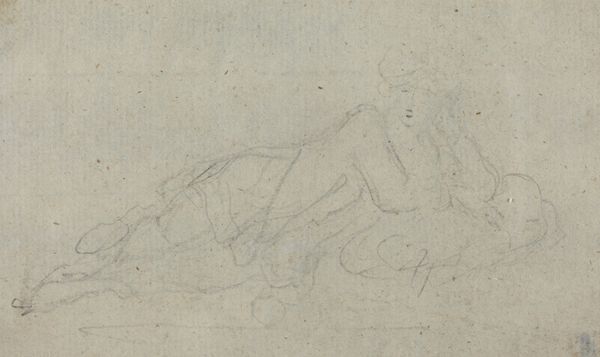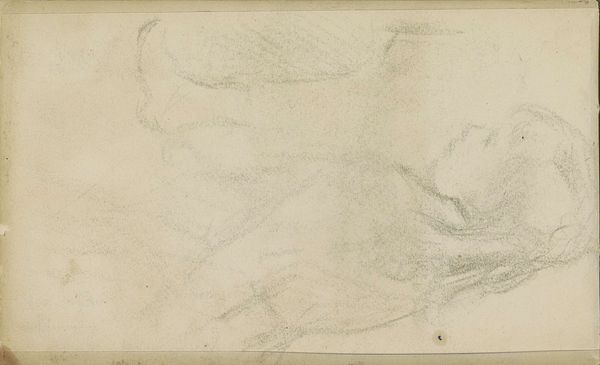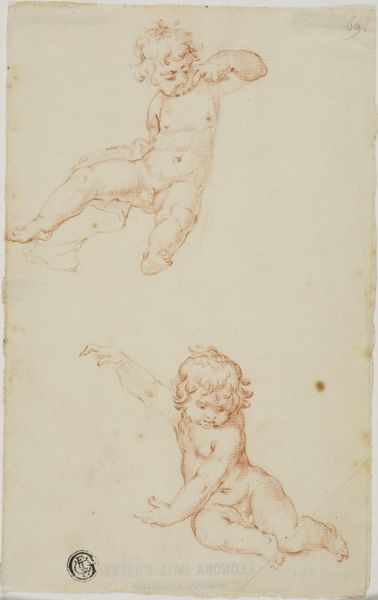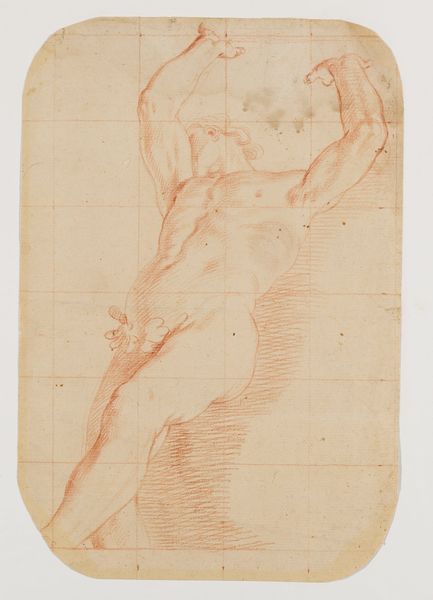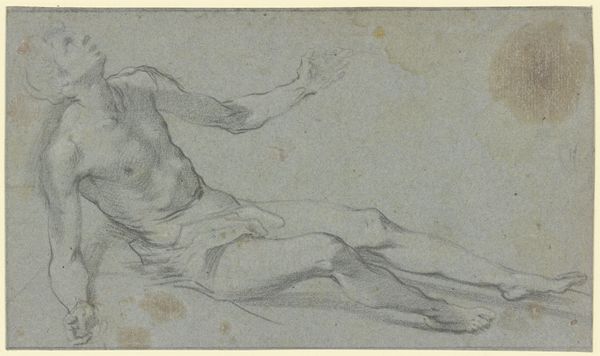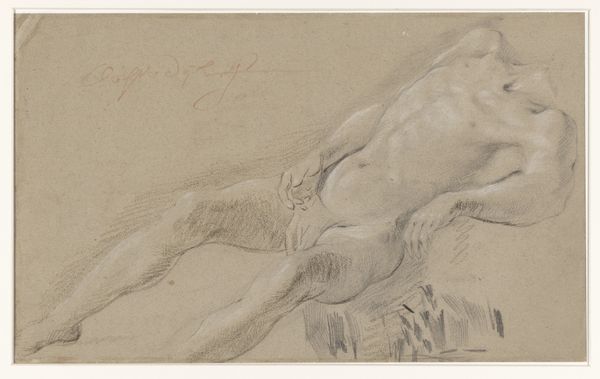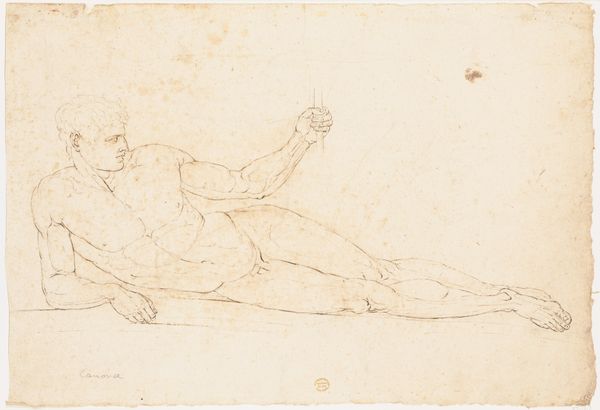
drawing, pencil
#
drawing
#
figuration
#
pencil
#
academic-art
Dimensions: 414 mm (height) x 264 mm (width) (bladmaal)
Editor: So, here we have Agostino Melissi's "Reclining Man Supported by a Seated Man," a pencil drawing dating from around 1615 to 1683. It feels very intimate, almost like a captured moment of vulnerability. What strikes you most about this drawing? Curator: The entwined figures immediately suggest a layered narrative. We see more than mere physical support here, don't you think? The reclining figure, seemingly dependent, is juxtaposed with the active support of the seated man. It invites reflection on dependency and strength. Editor: Definitely. There's something very human about needing support, especially as a man being shown so vulnerable. But why render this moment? What meaning would this have for the viewer? Curator: It perhaps acts as a mirror. Think of classical sculpture, which would idealize male form to embody civic virtue, moral rectitude and heroic power. How does this drawing speak with that inheritance, using the male form not to exemplify mastery but human needs for care and rest? Editor: That contrast helps make this work standout. Its refusal to portray the masculine as strictly powerful forces me to reflect on the sitter's state of vulnerability as powerful and honest. Curator: Exactly. And consider the lack of distinct facial features, they universalize the experience. Who hasn’t found themselves in a position of needing to lean on someone, or conversely, provide that crucial support? Editor: You've really opened my eyes to the multiple layers of meaning embedded in this seemingly simple drawing. It's not just an image of support, but an exploration of universal human experiences, captured through symbolism and form. Curator: Precisely! And in its suggestive style, the image itself beckons our act of support, to bring meaning, empathy, and wonder into a world that needs it.
Comments
No comments
Be the first to comment and join the conversation on the ultimate creative platform.
